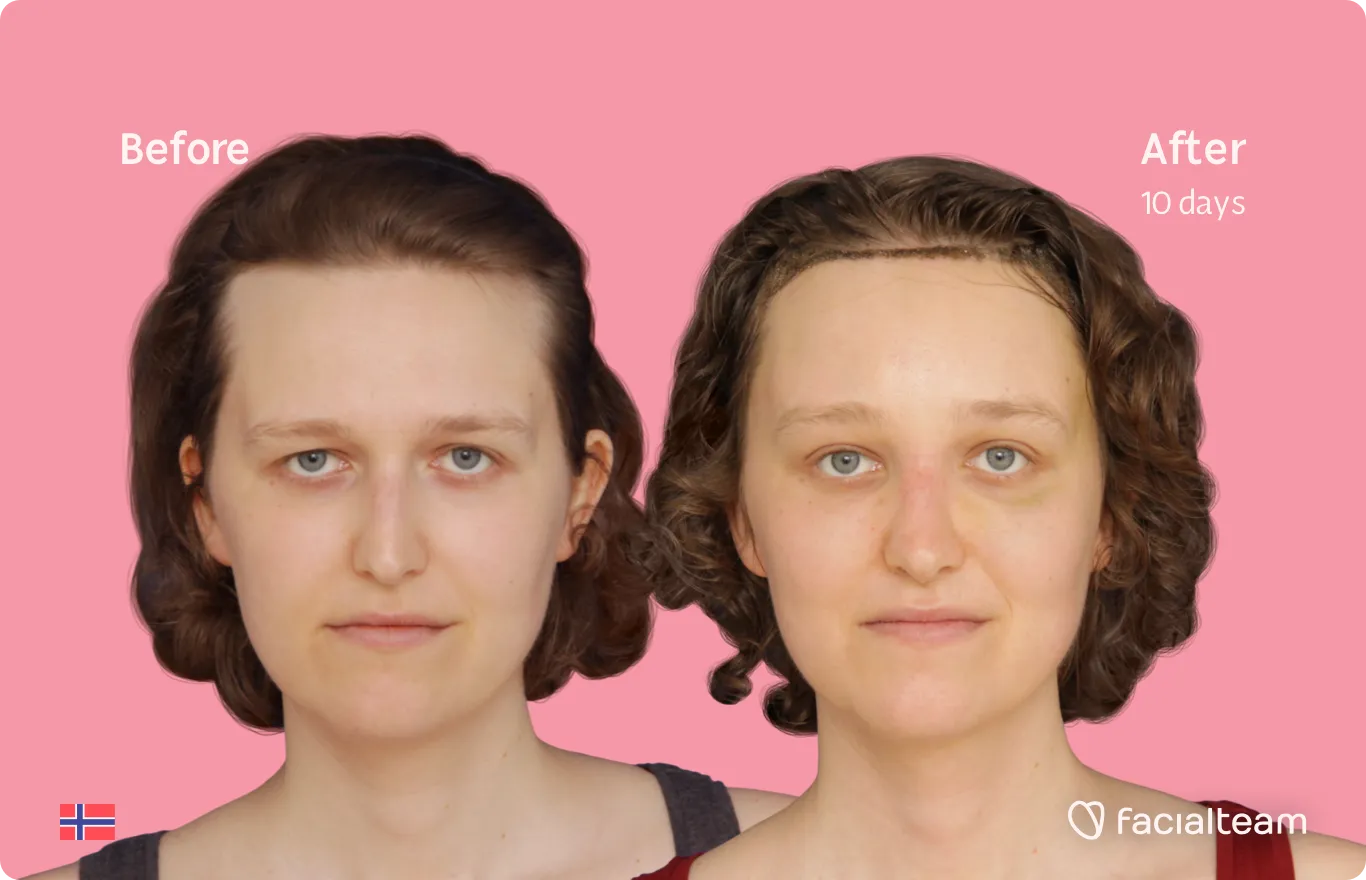Tightness, numbness and stiffness after FFS Surgery

It is common to experience facial stiffness after FFS Surgery. Tightness and a lack of sensitivity in the areas of the intervention are to be expected. Time is the main factor in healing tissues that have been significantly affected during any surgery: weeks, months, and even years after you will continue to notice gradual improvements.
Sensation may still be different, but practically-speaking you may expect to recover “normal” parameters within 6 months to 2 years. In this post, we describe some typical changes patients notice after facial feminization procedures.
Symptoms after Forehead Feminization Surgery
First let’s discuss some typical symptoms in the first year after Forehead Reconstruction Surgery, where several layers of tissue have been affected and often a self-dissolving fixation device called Endotine has been employed.
Stiffness and numbness of the eyebrows
Due to the alteration of small nerve fibers during the surgery, total or partial lack of feeling (numbness) and/or the ability to move the eyebrows is actually completely normal and will gradually improve with time–most noticeably between 3-6 months. In some cases, stiffness after FFS Surgery and partial insensitivity may be prolonged. There is no therapy that decreases this time, although exercising* the area routinely can help restore mobility.
Endotines – Painful bumps on forehead
Mild and asymmetrical pain may occur after forehead surgery. If it is localized, it is probably due to Endotines, which are small dissolving devices designed to mobilize the internal layers temporarily. They will begin to re-absorb 6 months after the surgery and could persist for 15 to 18 months. It is frequent to feel swelling and minor discomfort in the area, appearing as small lumps on the scalp. You don’t have anything to worry about.
Alteration of sensation and tingling
Tingling is a good sign of scalp reinnervation after a forehead surgery. It is called paresthesia / dysesthesia, is normally temporary and will subside gradually with adequate recuperation regained after a year, more or less. Surely, you notice it in a swollen area such as where the Endotines are located.
The phases of wound healing after FFS Surgery.
In short, the readaptation of the tissues requires plenty of time. When we speak of healing, it is not just the incision scar that is healing. All of the internal layers that have been treated and the surrounding tissue that has been detached and altered during surgery undergo a cicatricial process of self-repair. Symptoms such as lack of elasticity, contraction, and stiffness after FFS Surgery are all part of wound healing, which may take around 2 years to run its course, in 3 phases:
- 1st Phase, Inflammatory.
A response to an injury to the body. Vasoconstriction occurs and a blood coagulations form to impede bleeding. The vessels dilate thereafter to allow the passage of the cells that will take care of the repair. It is in this phase when the typical signs of a immune system reaction are visible: erythema (redness), heat, edema (inflammation) and pain. After a few days or weeks, these subside and a scab forms over the entry of the wound.
- 2nd phase, Proliferative.
Internally, the wound begins to heal through granulation tissue (mainly collagen). Fibroblasts are the most important cells during this phase. Furthermore, more blood vessels are formed in the area and they provide oxygen and nutrients and eliminate waste products (hence the reddish color of the scar).
- 3rd phase, Maturative
Several weeks after the proliferative phase, the maturation begins. It can take up to two years to complete. The blood vessels, once they become unnecessary, begin to disappear and the wound loses its red color. The collagen type of the previous phase is replaced by another type of stronger collagen, which causes a greater contraction in the tissues (meaning less elasticity of the area). At the end of this phase, the wounds are “sealed” by scar tissue which has much less cellular activity than the normal surrounding tissue, hence the typical stiffness after FFS Surgery.
What can I do against tightness, numbness and stiffness after FFS surgery?
There is a lot of speculation about what helps with the healing, but the only thing certain is the following:
- Patience, prepare yourself for the period after FFS surgery in advance.
- Massages and exercises after FFS surgery help in certain cases, at least on a psychological level as a panacea.
Ultrasonic devices such as INDIBA have been developed (the most recognized in the recovery is INDIBA) that can help accelerate the healing process and improve the scar elasticity as well as reduce residual inflammations. The inconvenience here is the price, it is an expensive treatment which does not guarantee results. Phototherapy, oxygen therapy, vitamin therapy are among other alternatives, still controversial.
Contact your postop patient coordinator for information specific to your surgical treatment and every patient responds differently to the healing process.
*Stay tuned to our YouTube channel for more information on facial physiotherapy exercises to encourage healing.





